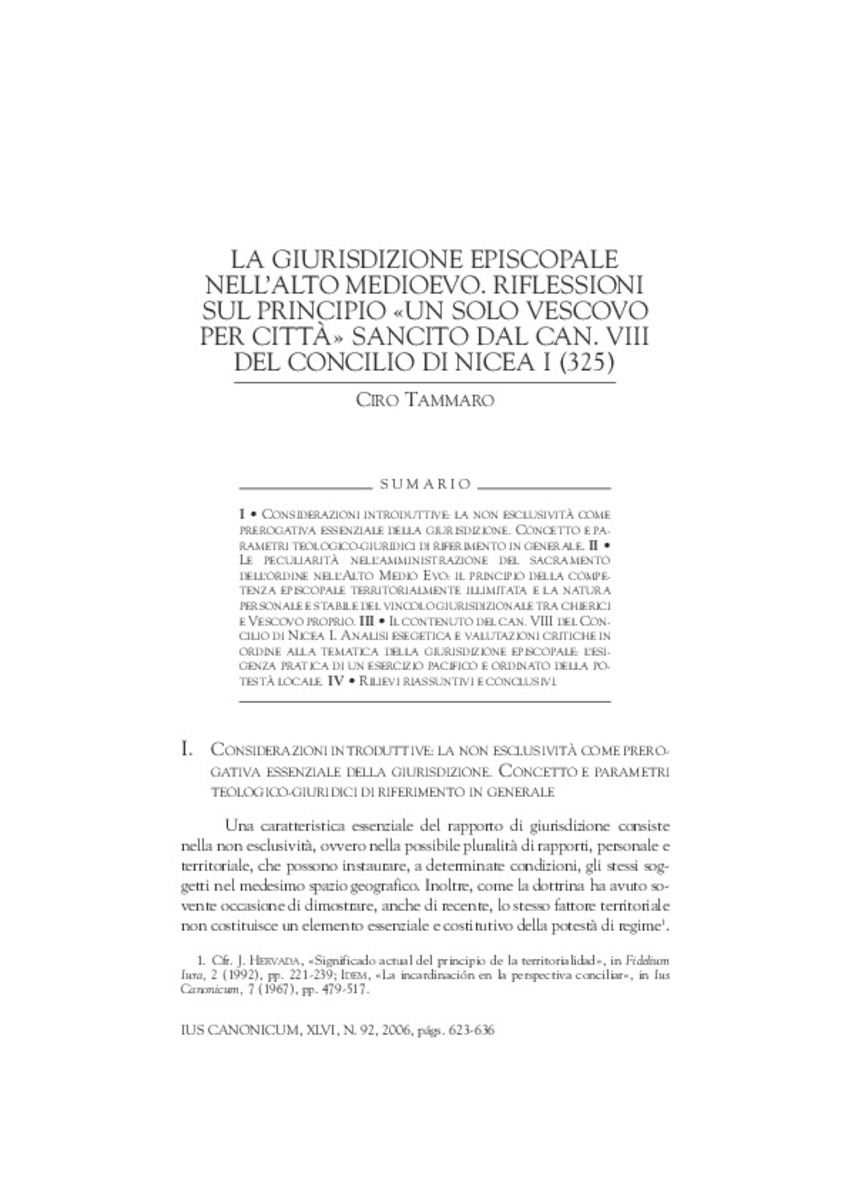Full metadata record
| DC Field | Value | Language |
|---|---|---|
| dc.creator | Tammaro, C. (Ciro) | |
| dc.date.accessioned | 2011-03-30T18:13:07Z | - |
| dc.date.available | 2011-03-30T18:13:07Z | - |
| dc.date.issued | 2006 | - |
| dc.identifier.citation | IUS CANONICUM, XLVI, N. 92, 2006, págs. 623-636 | es_ES |
| dc.identifier.issn | 0021-325X | - |
| dc.identifier.uri | https://hdl.handle.net/10171/17393 | - |
| dc.description.abstract | The article is a synthesized legal-historic examination of the administration of the sacrament of Holy Orders in the Early Middle Ages. Given that in the apostolic era and immediately afterwards the territorial limits of the organizational structures of the Church were not clear or defined as we now understand, the power of the bishops was not expressed as power over a physical territory as such, but over the people and things which had been entrusted to them by the consecration they had received and the corresponding pastoral commission. The necessity for an ordered exercise of episcopal power, linked to the specific praxis of government, appears to be the only reason to be found as a basis for the... | es_ES |
| dc.language.iso | ita | es_ES |
| dc.publisher | Instituto Martín Azpilicueta | es_ES |
| dc.rights | info:eu-repo/semantics/openAccess | es_ES |
| dc.subject | Materias Investigacion::Derecho canónico | es_ES |
| dc.subject | Obispos | es_ES |
| dc.subject | Sacramentos | es_ES |
| dc.subject | Clero | es_ES |
| dc.subject | Edad Media | es_ES |
| dc.subject | Civilización medieval | es_ES |
| dc.subject | Cuidado pastoral | es_ES |
| dc.title | La giurisdizione episcopale nell'Alto Medievo. Riflessioni sul principio «un solo vescoso per città» sancito dal can. VIII del Concilio di Nicea I (325) | es_ES |
| dc.type | info:eu-repo/semantics/article | es_ES |
| dc.identifier.doi | 10.15581/016.46.14615 | es_ES |
Files in This Item:
Statistics and impact
Items in Dadun are protected by copyright, with all rights reserved, unless otherwise indicated.






